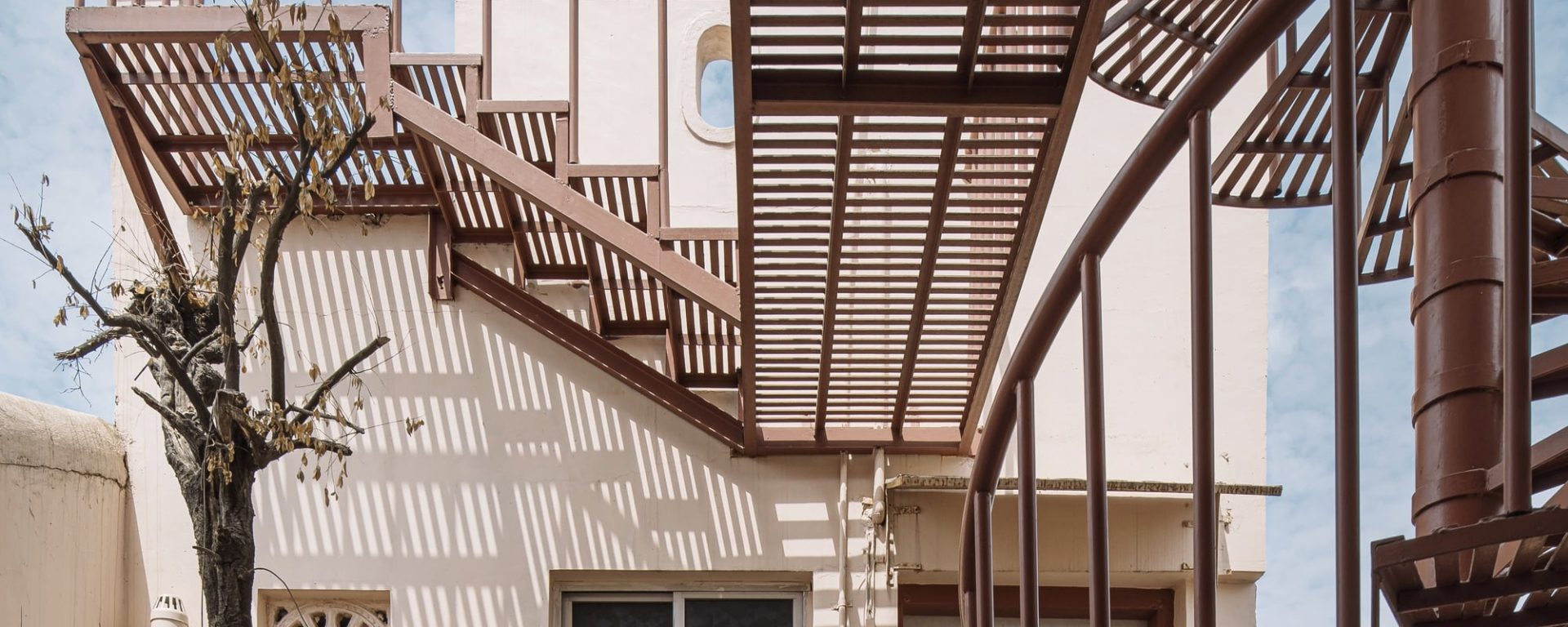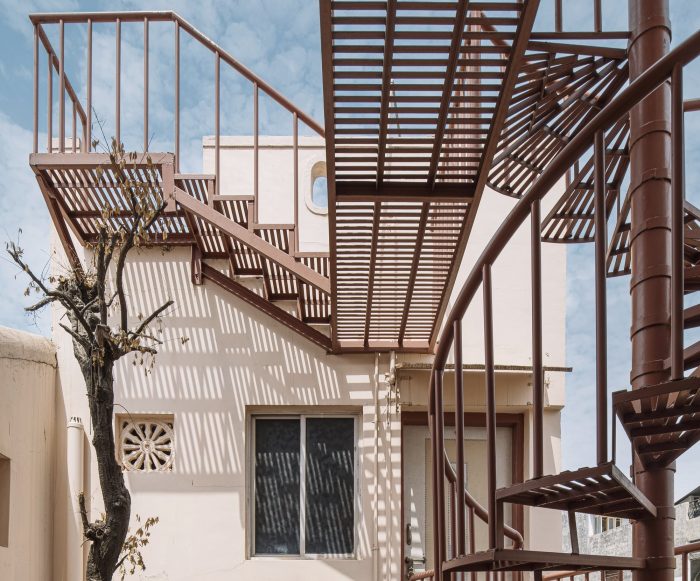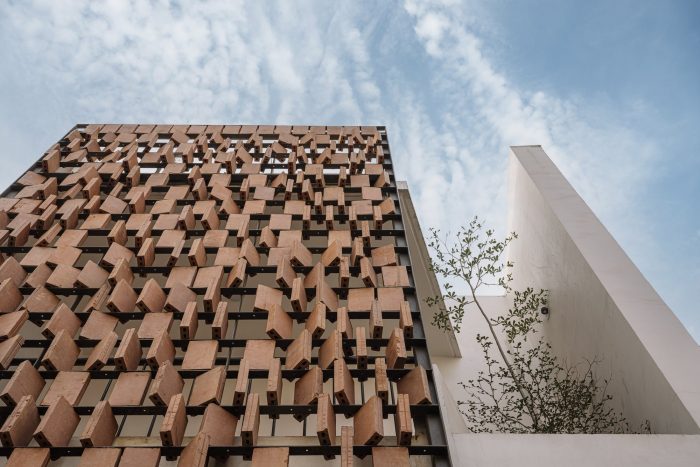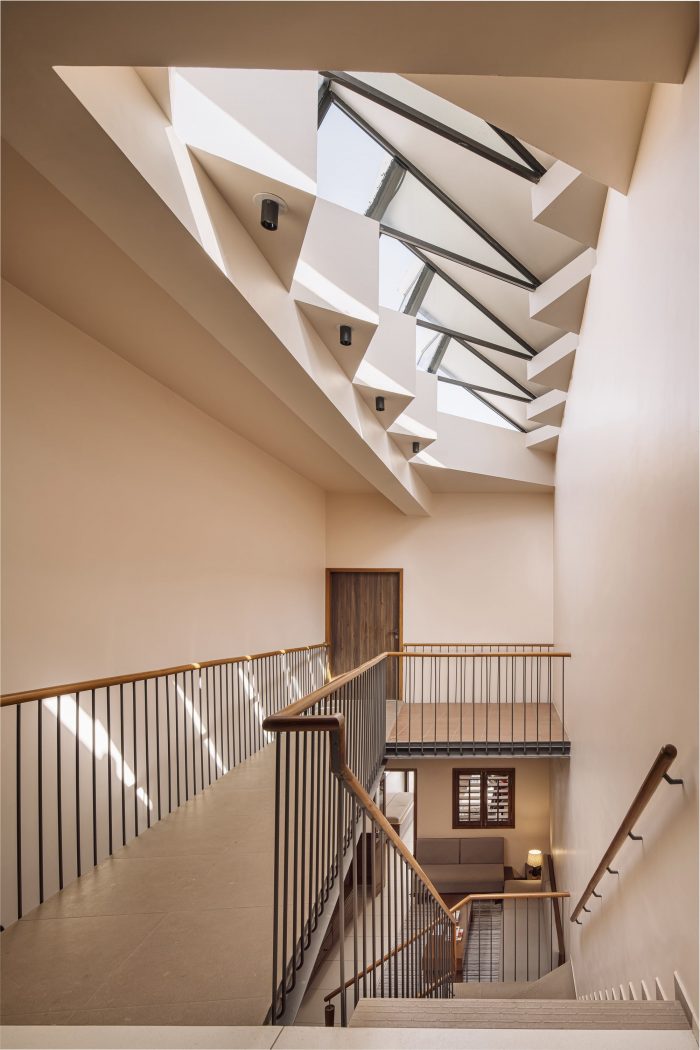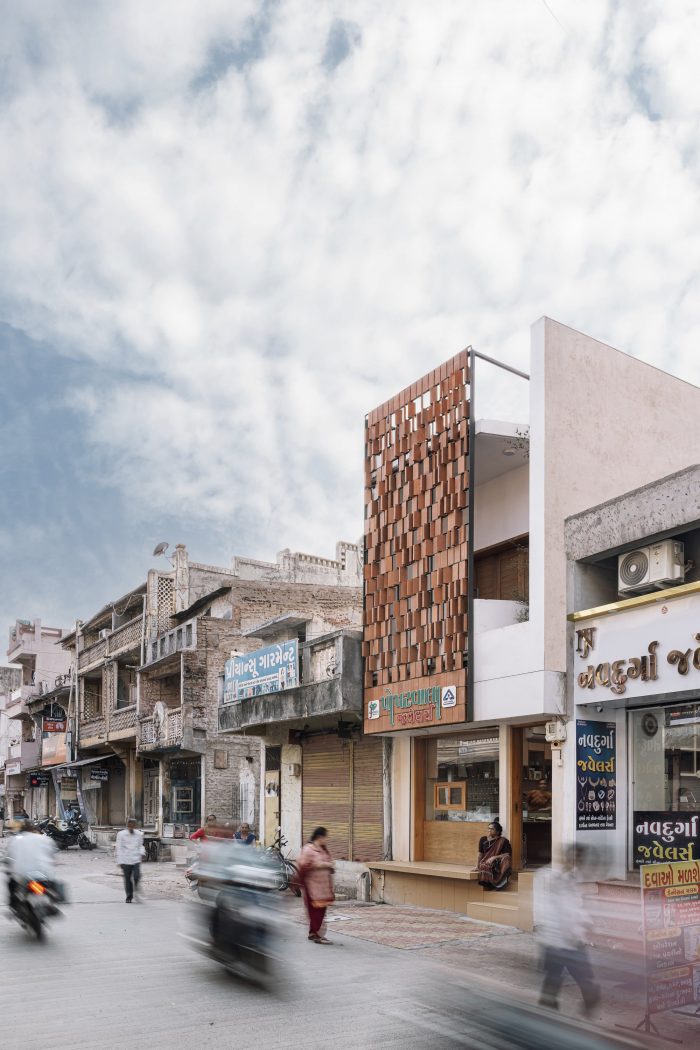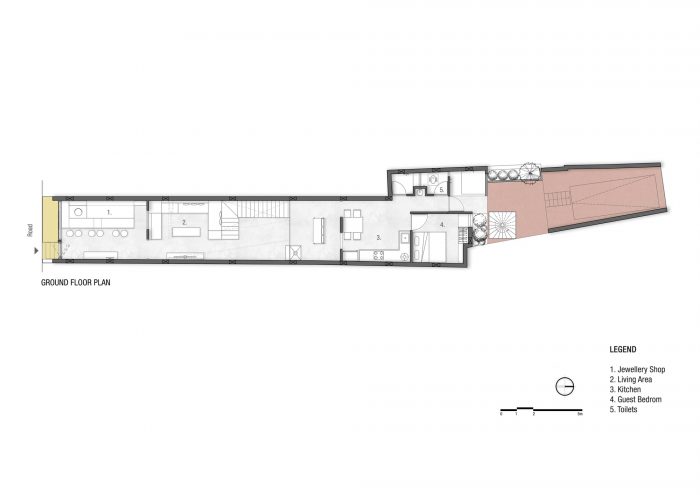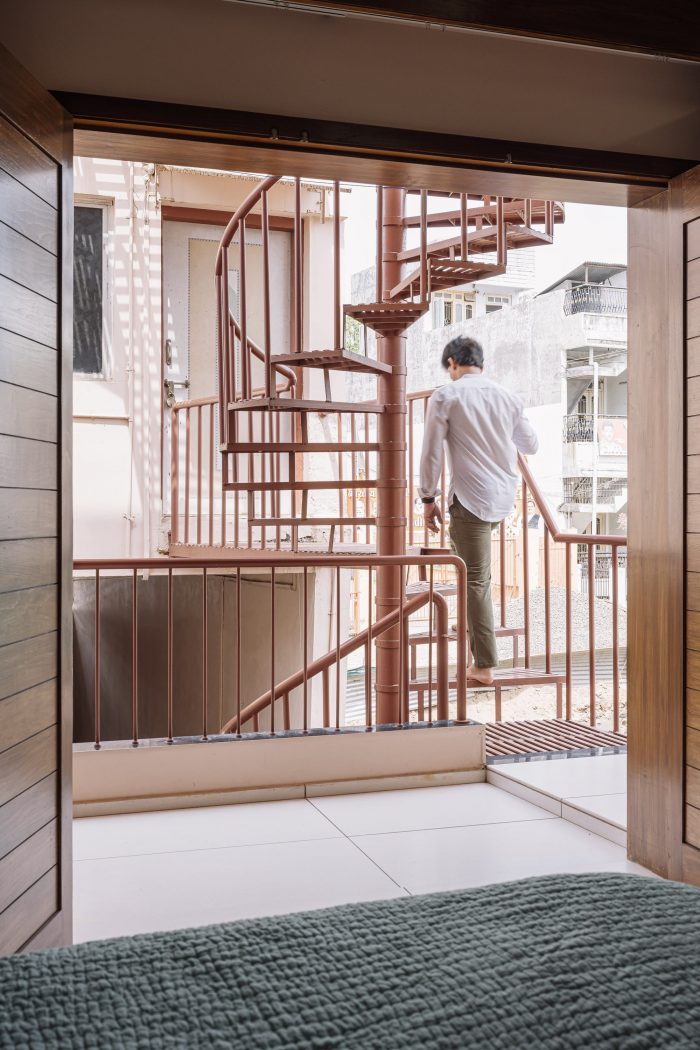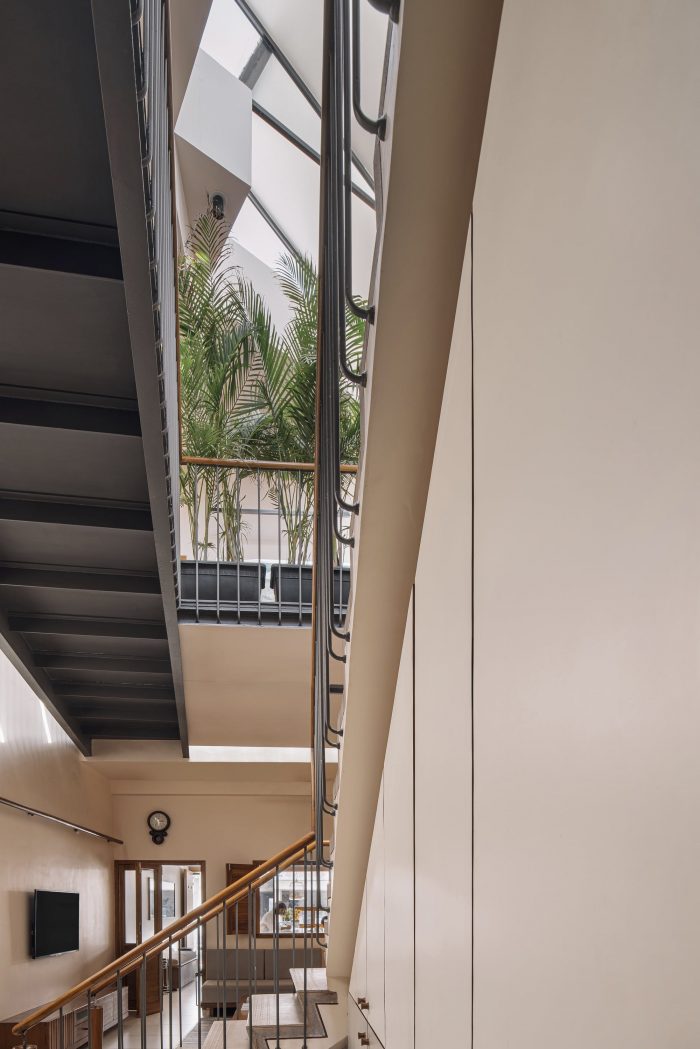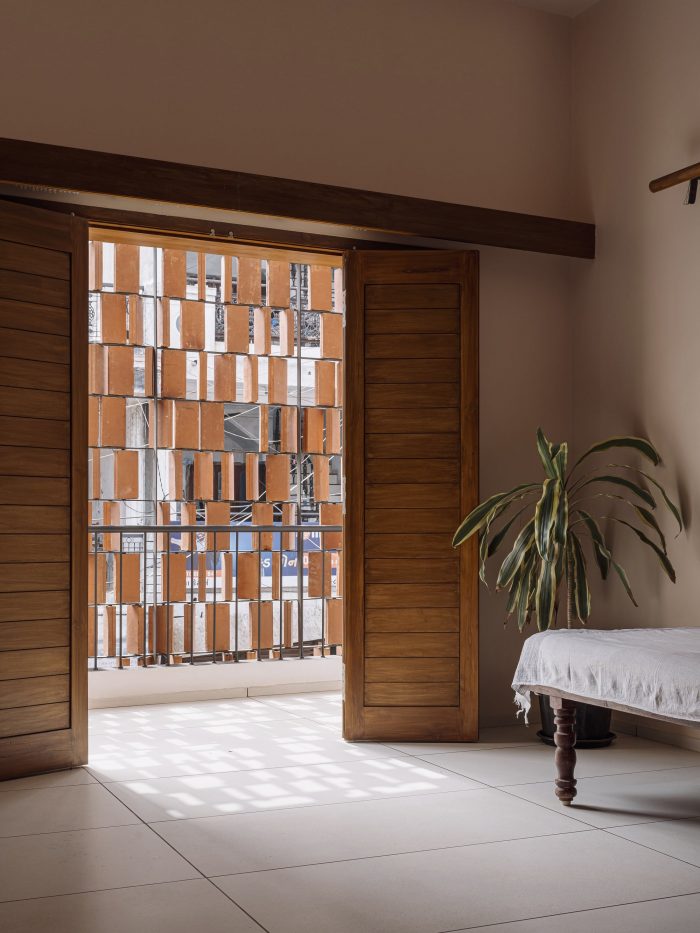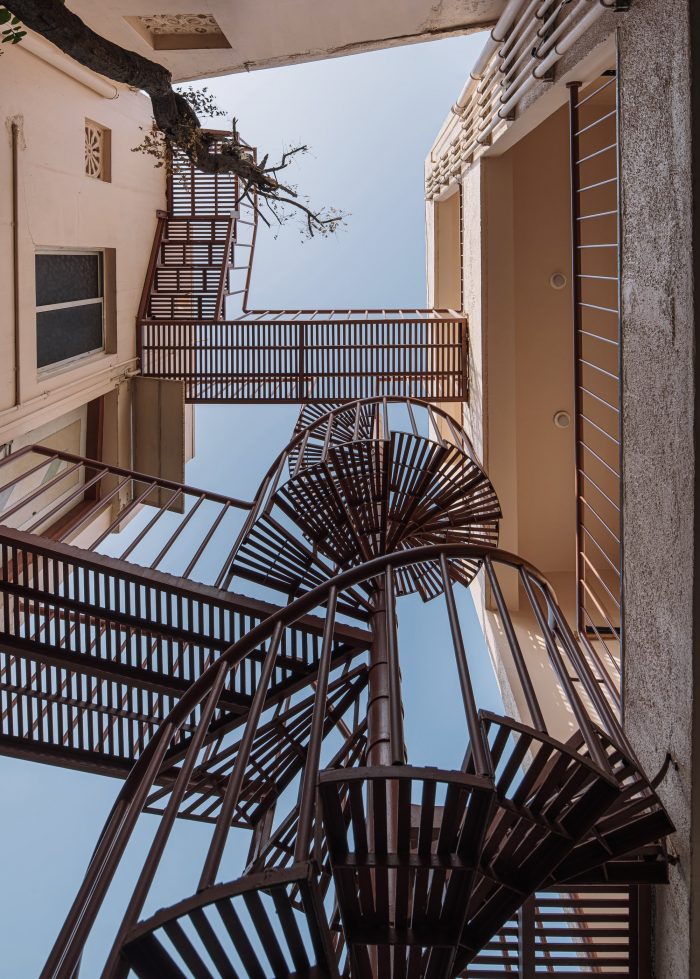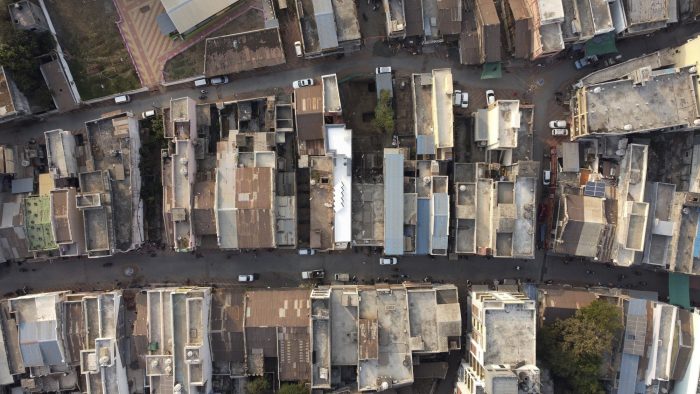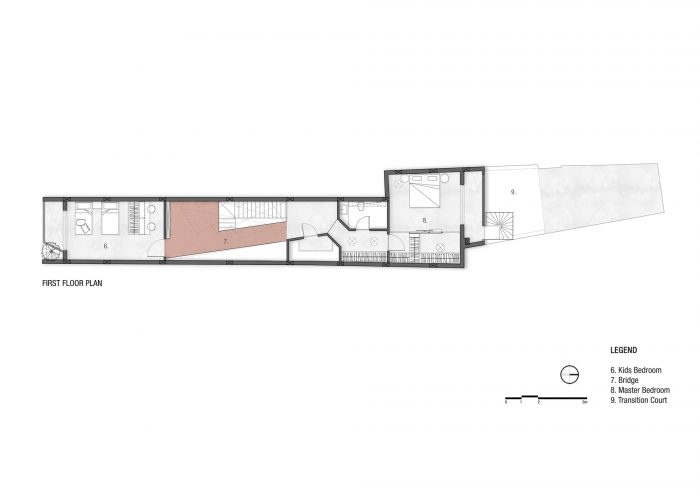这座线性住宅隐藏在古吉拉特邦的高密度城镇Mandvi。顾名思义,该设计是由3米x30米的地块大小的场地限制驱动的,沿长度方向的两边都是开放式的,前面是活跃的街道,后面是开放的庭院。遵循该地区原有的生活工作住房类型,不仅要隔离和提供隐私,而且要打破生活空间的线性,提供充足的日光。这一点是通过在中间添加一个浮桥来实现的,这有助于创造一个中央双高的体量,并提供机会通过屋顶上的铰接天窗引入自然光。添加一个中央楼梯有助于组织和连接周围的所有空间,同时在它们之间创造一个无缝的视觉连接,从而使其成为生活空间的理想位置,将其转变为房屋的社交中心。
The Linear house is tucked away in the high-density town of Mandvi, Gujarat. As the name suggests, the design is driven by the site constraints of a 3m x 30m plot size, open-ended on both sides along the length, with an active street front, and an open courtyard at the back. Adhering to the original live-work housing typology also found in the neighborhood, it was important to not only segregate and provide privacy but also break away from the linearity of the living space and provide ample daylight. This was achieved by adding a floating bridge in the middle, which helped create a central double-height volume, and provided the opportunity to bring in natural daylight through an articulated skylight on the roof. Adding a central staircase helps organize and connect all the spaces around it, while creating a seamless visual connection between them, thus making it an ideal spot for the living space to be situated, transforming it into the social hub of the house.
这座房子可以分类分为两层,公共和私人。地面层是 “公共 “的,包括前面的珠宝店,它把你带到与厨房相连的中央生活空间,这进一步导致俯瞰后院的客人卧室。所有这些空间都被设计成在你从一个空间过渡到另一个空间时有一个持续的视觉流动。上层是更多的私人空间,包括面向后院的主卧室和面向街道的儿童卧室,由一个中央社交空间和浮桥连接。
The house can be categorically split into two levels, public and private. The ground level being ‘public’ includes the jewelry shop in the front, which brings you to the central living space connected to the kitchen, which further leads to the guest bedroom overlooking the back courtyard. All these spaces have been designed to have a constant visual flow as you transition from one space to the next. The upper level is more private consisting of the master bedroom facing the back courtyard, and the kids’ bedroom facing the street, connected by a central social space and a floating bridge.
建筑围护结构的设计是对当地气候的一种回应。它的目的是在原本光线昏暗的狭窄生活空间中最大限度地利用日光,并努力保持建筑的凉爽。为了在繁忙的街道上提供隐私,并保护孩子们的卧室不受东南阳光的影响,设计了一个旋转的赤土砖的jali,不仅作为一个屏幕,而且创造了一个动态的外墙,以获得视觉上的兴趣,同时在它旁边种植了一棵树。这两个元素都作为房屋的遮阳和冷却剂。另一方面,屋顶的天窗被衔接起来,以最大限度地增加下面空间的自然光,同时优化太阳能电池板的位置,以获得最大的太阳增益–使线性房屋更具有可持续性和能源效率。
The building envelope has been designed as a response to the local climate. It aims to maximize daylight in what could have been a dimly lit narrow living space and works to keep the building cool. In order to provide privacy from the busy street and protect the kids’ bedroom from the harsh south-east sunlight, a rotating terracotta brick jali was designed to not only act as a screen but to create a kinetic façade for visual interest along with a tree planted adjacent to it. Both these elements act as shading and cooling agents for the house. On the other hand, the roof skylight has been articulated to maximize the natural light in the space below, while optimizing the position of the solar panels for maximum solar gain – making the Linear house more sustainable and energy efficient.
Architects: The Company of Design
Area : 2765 ft²
Year : 2021
Photographs :Ishita Sitwala, Samarth Pachchigar
Manufacturers : Blum, Hafele, Donato, Marino Laminates, Nuvocotto Tiles, Piccolo Mosaics, Restile
Lead Architects : Niel Parekh, Pooja Shah, Moli Patwa
Interior Design : The Company of Design
Structural Engineer : Arcon Consultants
Design Team : Pooja Shah, Niel Parekh, Moli Patwa, Manoj Kuselan, Zeal Jhaveri
Electrician : Dhruv Upadhyay
Furniture : Gopal Suthar
Fabricator : Nilesh Panchal
Text : Sahil Shah
Waterproofing : Kalpam Chemicals
City : Mandvi
Country : India

